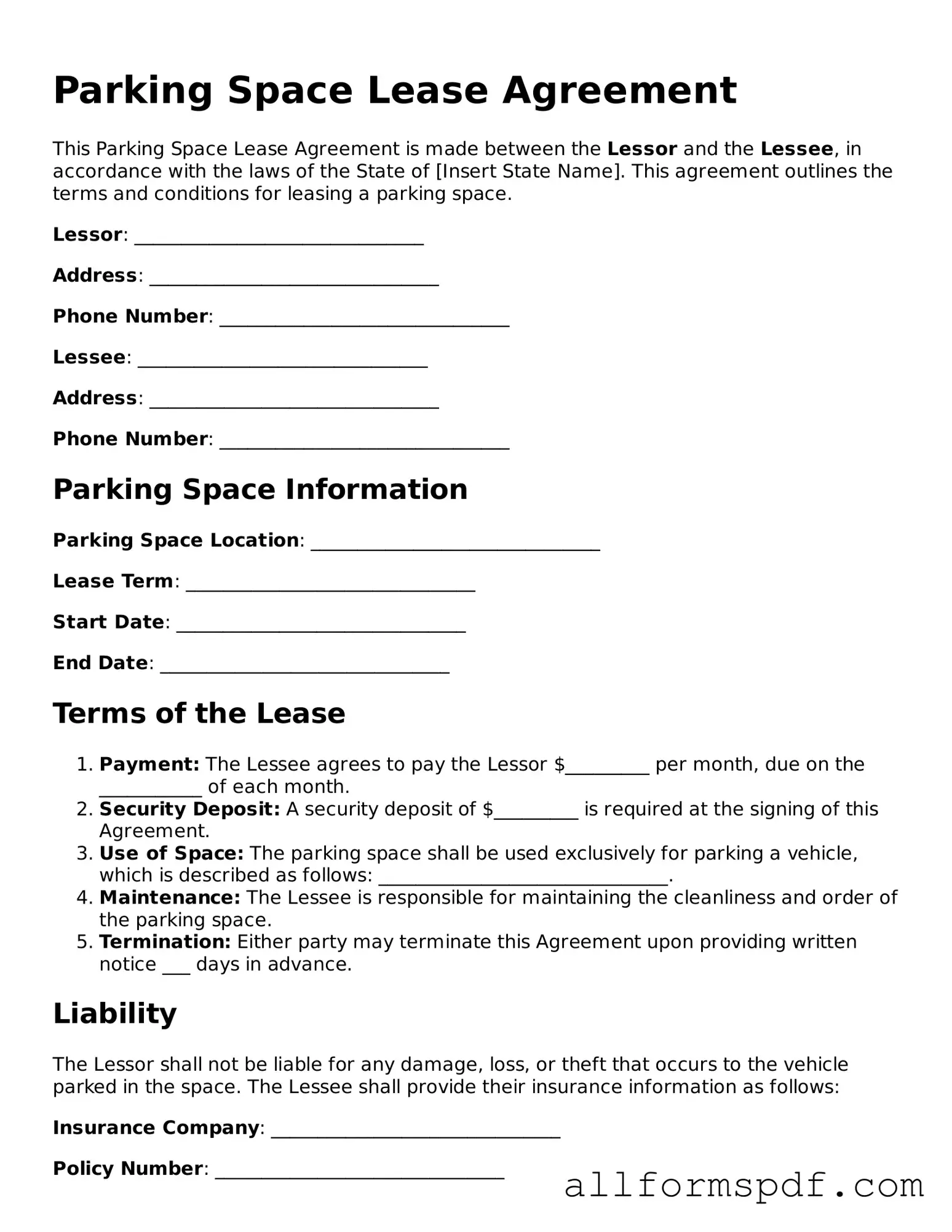When filling out a Parking Space Lease Agreement form, individuals often overlook important details that can lead to complications later. One common mistake is failing to provide accurate contact information. This includes not only the name and address of the lessee but also their phone number and email. Without this information, communication regarding the lease can become difficult, potentially leading to misunderstandings.
Another frequent error is neglecting to specify the duration of the lease. The agreement should clearly state the start and end dates. If these dates are omitted or unclear, it can create confusion about when the lease begins and when it ends. This can lead to disputes between the lessor and lessee regarding the terms of occupancy.
Many people also forget to include the payment terms. The lease should outline how much rent is due, the payment schedule, and acceptable payment methods. Without these details, both parties may have different expectations, which can result in conflicts over payment timing or amounts.
In addition, some individuals mistakenly assume that the lease does not need to be signed by both parties. A Parking Space Lease Agreement is a binding contract, and both the lessor and lessee must sign it to validate the terms. Without signatures, the agreement may not hold up in a legal context, leaving both parties vulnerable.
Another common oversight is not reviewing the lease for any additional clauses or stipulations. Sometimes, the lease may include specific rules about the use of the parking space, such as restrictions on vehicle types or maintenance responsibilities. Ignoring these clauses can lead to violations of the lease, which may result in penalties or eviction from the space.
People often misinterpret the importance of including details about the security deposit. The lease should specify the amount of the deposit, the conditions for its return, and any deductions that may be made. Failing to address this can lead to disputes over the return of the deposit at the end of the lease term.
Lastly, individuals sometimes overlook the necessity of including a termination clause. This clause outlines the conditions under which either party can terminate the lease early. Without it, both parties may find themselves in a difficult situation if circumstances change and one party needs to vacate the space sooner than expected.
